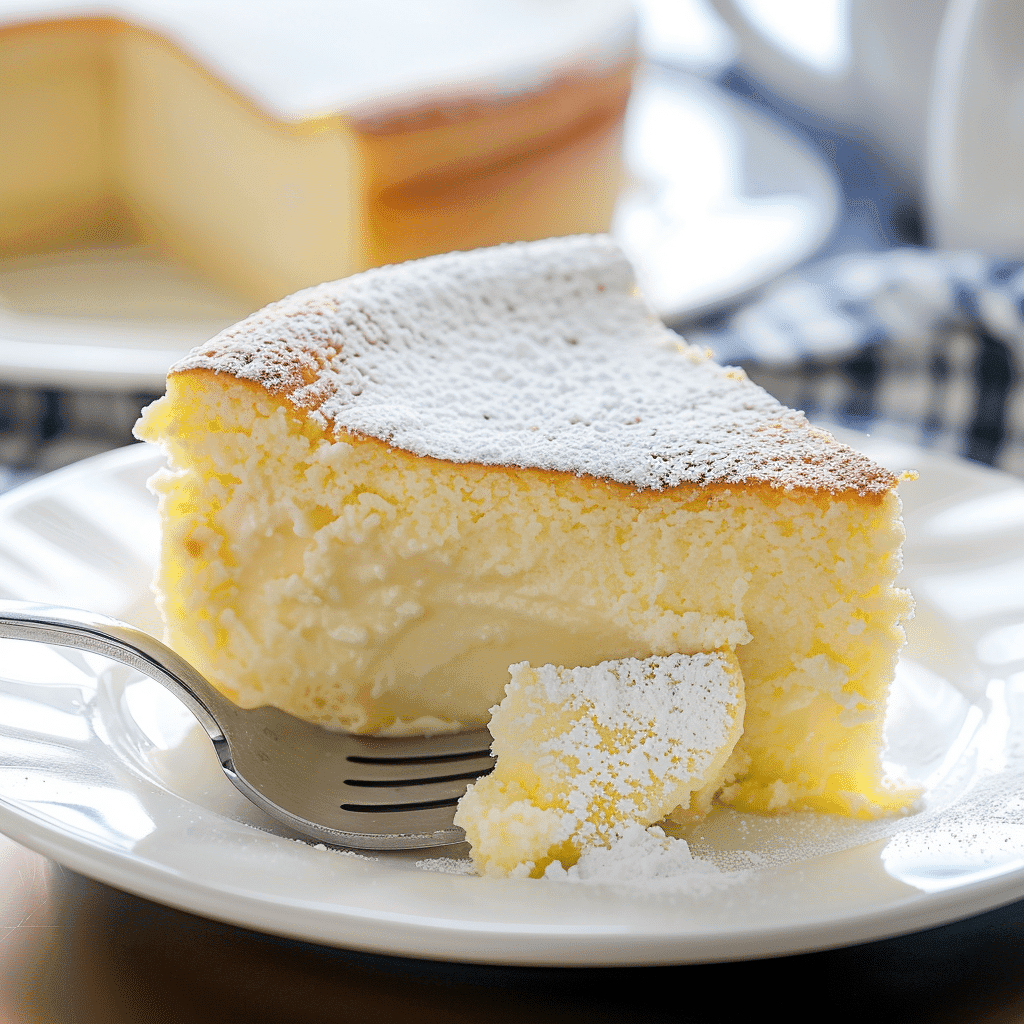The Japanese cheesecake rice cooker recipe might just change the way you think about your rice cooker, It’s that light, fluffy, and surprisingly easy. This recipe delivers all the delicate fluff and creamy richness of a traditional Japanese souffle cheesecake, Without using an oven.
With just a bit of patience, a few pantry staples, and your trusty rice cooker, you can create a jiggly, smooth cheesecake that’s sure to impress. In this article, I’ll show you how to nail that signature texture, avoid cracking, and serve it beautifully. Plus, we’ll talk about how long it keeps and why your rice cooker’s “cake” button might become your new favorite.
Table of Contents
Table of Contents
- Inspired by Simplicity and Soul
- What Makes Japanese Cheesecake So Unique
- Smooth Starts with Cream Cheese and Yolks
- Folding in Sifted Flour and Milk for Structure
- Building Air for a Light Rice Cooker Cake
- Transferring to the Rice Cooker Without Losing Lift
- Spotting the Signs of a Perfectly Cooked Japanese Cheesecake Rice Cooker Recipe
- Cooling to Set the Texture and Develop Flavor
- Variations and Tips for Fluffy Rice Cooker Cake Lovers
- Serving, Storing, and Gifting This Rice Cooker Cake Recipe
- Japanese Cheesecake Rice Cooker Recipe Tips for Consistency
- Avoiding Common Issues with Rice Cooker Cheesecakes
- Japanese Cheesecake Rice Cooker Recipe for Everyday and Special Events
- Enhancing Your Japanese Cheesecake Rice Cooker Recipe Experience
- Frequently Asked Questions About Japanese Cheesecake Rice Cooker Recipe
- How to know when Japanese cheesecake is done?
- Why does my Japanese cheesecake crack?
- How long can Japanese cheesecake last?
- How do you know when a cheesecake is fully cooked?
The Story Behind This Japanese Cheesecake Rice Cooker Recipe
Inspired by Simplicity and Soul
Japanese cheesecake rice cooker recipe brings back memories of quiet Sunday afternoons in my Brooklyn kitchen. I first tasted this style of cheesecake during a trip to Tokyo and was amazed at how it managed to be both light and rich at the same time. Back home, I wanted to recreate that experience without heating up my entire apartment with the oven. That’s when my rice cooker became the perfect solution.
📄 Want to keep this recipe for later? Download your printable PDF version now and start cooking anytime!
📥 Download Recipe PDF✅ Print-friendly • 🕒 Save for later • 📱 Mobile-accessible
💡 Want more like this? Subscribe for weekly printable recipes!
This Japanese cheesecake rice cooker recipe is about making something impressive without any stress. The rice cooker provides gentle, even heat that’s ideal for creating that fluffy, souffle-like texture. If you enjoy quick desserts that don’t require complicated baking skills, my rice chocolate cakes are another simple favorite.
What Makes Japanese Cheesecake So Unique
This isn’t your typical cheesecake. The Japanese cheesecake rice cooker recipe achieves a delicate balance of lightness and structure by folding whipped egg whites into a cream cheese base. The result is a cake that jiggles when you touch it and melts delightfully in your mouth.
What I love most about this recipe is how simple ingredients come together to create something so elegant. You don’t need a water bath, just the steady steam and gentle heat of your rice cooker. If you appreciate soft-textured cakes, you might also enjoy my tiramisu crepe cake. It’s equally smooth and layered with rich flavors.
In the next section, we’ll go through how to prepare the batter so it bakes up into the perfect fluffy rice cooker cake.
Print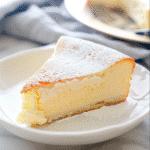
Japanese Cheesecake Rice Cooker Recipe – 3 Fluffy Favorites
- Total Time: 55 mins
- Yield: 1 cake (6 servings) 1x
- Diet: Vegetarian
Description
This Japanese cheesecake rice cooker recipe creates a fluffy, souffle-like dessert using simple ingredients and gentle heat. No oven required—just your rice cooker.
Ingredients
227 grams (8-oz block) cream cheese, softened
2 large eggs, separated
80 grams granulated sugar (approx. 6 1/2 tbsp)
2 tbsp lemon juice
40 grams cake flour (approx. 5 tbsp)
200 ml skim milk (or low fat/whole milk)
Powdered sugar, for dusting
Instructions
1. Add softened cream cheese to a large bowl and microwave in 10-second bursts until smooth.
2. Whisk in egg yolks until fully combined and creamy.
3. Add sugar and lemon juice, whisking well after each addition.
4. Sift cake flour into the batter using a sieve; whisk until smooth.
5. Add milk and gently whisk until the batter is pourable.
6. In a clean bowl, whip egg whites until stiff peaks form.
7. Fold egg whites into batter in three batches using a spatula.
8. Grease the rice cooker pot thoroughly with oil or butter.
9. Pour the batter into the pot and level the top.
10. Use the cake setting or white rice setting; cook for about 40 minutes.
11. Check for doneness when edges pull from the sides and the top springs back.
12. Let cake sit for 5 minutes before inverting onto a plate.
13. Refrigerate for at least 1 hour before dusting with powdered sugar and serving.
Notes
Use very soft cream cheese to avoid lumps.
Always sift flour to keep the batter light.
Let the cake cool and chill before serving for the best texture and flavor.
- Prep Time: 15 mins
- Cook Time: 40 mins
- Category: Dessert
- Method: Rice Cooker
- Cuisine: Japanese
Nutrition
- Serving Size: 1 slice
- Calories: 210
- Sugar: 12g
- Sodium: 90mg
- Fat: 13g
- Saturated Fat: 8g
- Unsaturated Fat: 4g
- Trans Fat: 0g
- Carbohydrates: 18g
- Fiber: 0g
- Protein: 5g
- Cholesterol: 65mg
Preparing the Perfect Batter for a Japanese Cheesecake Rice Cooker Recipe
Smooth Starts with Cream Cheese and Yolks
Japanese cheesecake rice cooker recipe begins with softened cream cheese, a crucial step. If your cream cheese is too firm, it can leave lumps in the batter, Make sure it’s softened for a smooth, creamy mix. Gently warm it in the microwave in short, ten second bursts until it whips into a silky, smooth texture.
Once your cream cheese is smooth like frosting, whisk in the egg yolks. Add sugar, lemon juice, and blend thoroughly after each addition. Ensuring everything is well combined and lump free at this stage helps keep your batter light. For another simple whipped base dessert, check out my peach fluff, an easy no bake treat.
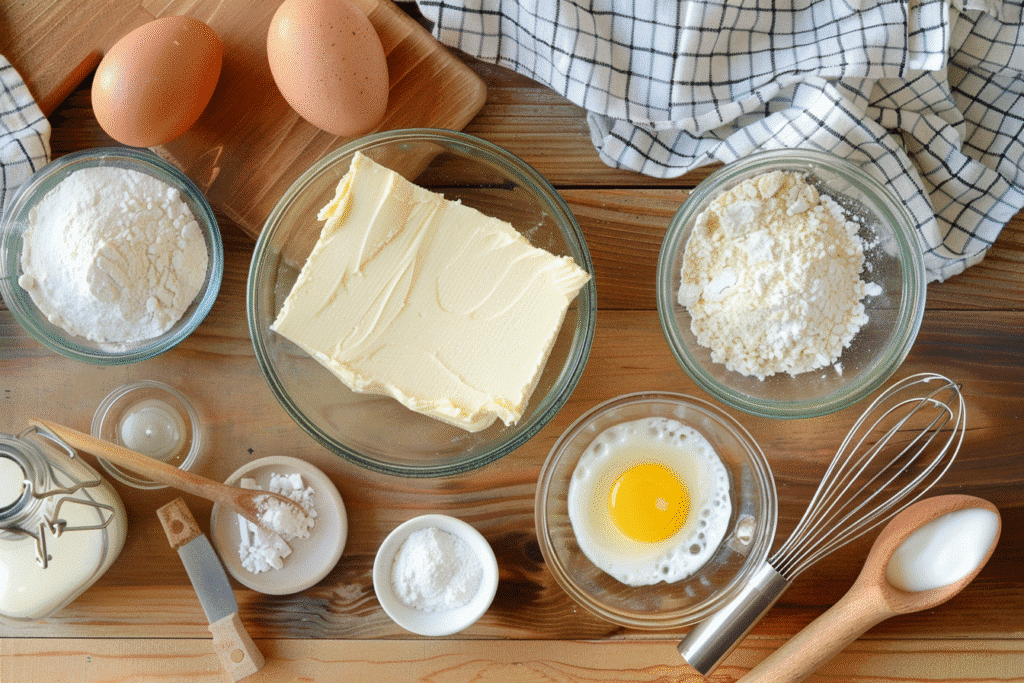
Folding in Sifted Flour and Milk for Structure
A successful Japanese cheesecake rice cooker recipe all comes down to properly mixing in the flour for that light, airy texture. Do not skip this step, sift your cake flour directly into the batter to keep it airy and free of clumps. No fancy sifter? A mesh strainer or sieve works just as well.
Gently whisk until the flour is fully blended in, then add the milk and stir until smooth. Your batter should be smooth and pourable, not too thick or runny. This step ensures even cooking in the rice cooker and gives the cake its signature souffle bounce. If you enjoy soft, moist cakes with structure, my banana mochi bars are another great texture focused recipe.
Whipping and Folding Egg Whites Like a Pro
Building Air for a Light Rice Cooker Cake
Japanese cheesecake rice cooker recipe owes its signature jiggle to whipped egg whites. This step adds volume and lightness. Make sure your mixing bowl is spotless and oil free, any grease can prevent stiff peaks from forming.
Whip the egg whites on high speed until they hold firm peaks. Fold them into the batter gently in three batches, using slow, circular motions from bottom to top. Avoid stirring to preserve as much air as possible. A few streaks are okay. For another airy cake that rises beautifully, try my black sesame chiffon cake. It offers a nutty, spongy texture.
Transferring to the Rice Cooker Without Losing Lift
Japanese cheesecake rice cooker recipe works best when the rice cooker bowl is well greased. Use a soft brush or paper towel to evenly coat the pot with oil. This prevents sticking and promotes even cooking. Pour in the batter gently, then use a spatula to level the surface without knocking out the air.
If your rice cooker has a cake setting, go ahead and use it for best results.. If not, the white rice setting can work. Just repeat the cycle as needed. Keep the lid shut and resist the urge to peek, Opening it too soon can affect the rise and texture. Let the rice cooker do its magic to ensure your cake stays light and finishes with a delicate golden edge.
Knowing When It Is Done and Why Cooling Matters
Spotting the Signs of a Perfectly Cooked Japanese Cheesecake Rice Cooker Recipe
One of the trickiest parts of making the Japanese cheesecake rice cooker recipe is knowing exactly when it is done. Unlike traditional oven baked cakes, rice cookers do not always have a timer that perfectly matches baking times, so you will need to rely on visual and tactile cues. The cheesecake is ready when you notice it starting to pull away gently from the sides of the rice cooker bowl. This is a sign that the batter has set properly and the cake is beginning to release.
Look for a surface that is uniformly pale golden. Avoid waiting for it to turn a deep brown, as that indicates overcooking. A great way to check doneness is by lightly pressing the top with your finger, if it springs back with a gentle bounce, it is perfectly cooked inside. If your finger leaves an indentation or the top feels mushy, it needs more time.
Patience is key. Do not open the lid too early to check, as this sudden drop in temperature can cause the cake to collapse or deflate, ruining the delicate texture. Around the 40 minute mark, start peeking through the steam, and if it still looks too soft, close it back and allow it to cook a bit longer. Keep in mind that every rice cooker heats differently, so times may vary.
If you want to hone your skills with delicate cakes, my mochi donut cake recipe offers excellent practice. It also demands careful timing to achieve the right balance of fluffy yet firm.
Cooling to Set the Texture and Develop Flavor
After your cake has finished cooking, it is tempting to dive right in, but letting it cool properly is just as important. Let the cake rest in the rice cooker for about five minutes after cooking to help it settle and release easily. Then carefully invert it onto a plate or cooling rack. Do not rush this step, handling the cake too soon can cause cracks or breaks.
Once out, place the cake in the refrigerator for at least one hour, preferably longer. This cooling period allows the flavors to develop fully and the texture to firm up. Eating the cake warm often means you will get a stronger egg flavor and a texture that is overly soft, almost custardy. When chilled, the cake becomes sweeter, the cream cheese flavor deepens, and the texture is delightfully light and fluffy.
If you enjoy chilled desserts, my coconut pudding slices are a lovely companion. They also need refrigeration to achieve their best flavor and texture.
Making the Japanese Cheesecake Rice Cooker Recipe Your Own
Variations and Tips for Fluffy Rice Cooker Cake Lovers
Japanese cheesecake rice cooker recipe is wonderfully versatile once you have mastered the basics. One easy way to add richness is by swapping out skim milk for whole milk or even half and half if you want it extra creamy. For an aromatic twist, try adding a small pinch of citrus zest, lemon or yuzu work beautifully, or a few drops of high quality vanilla extract to elevate the flavor without overpowering the delicate cheesecake base.
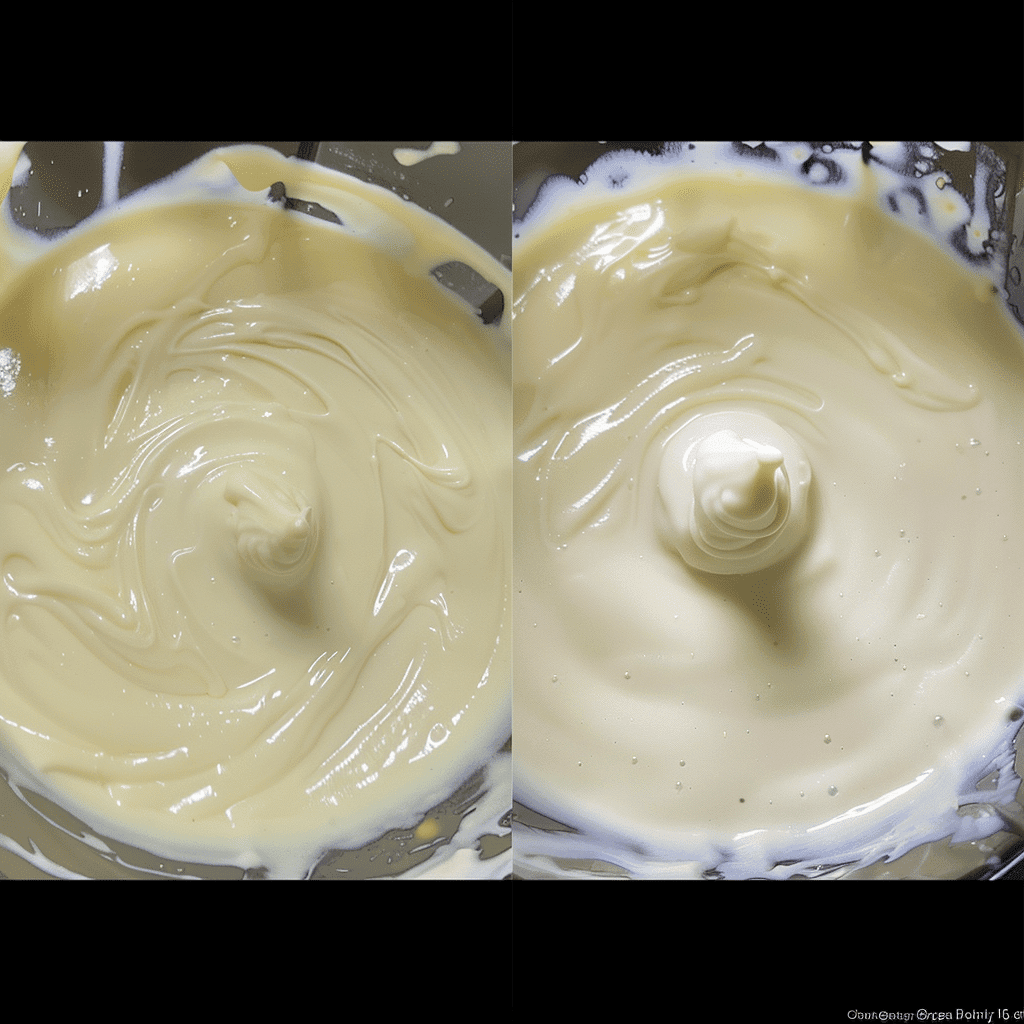
Greasing your rice cooker pot thoroughly is essential to ensure a clean release. Use a soft brush or paper towel to coat every inch with a neutral oil or butter. This small step can save you from frustration when it is time to remove your cake. If your rice cooker has a dedicated cake or multi cook setting, that is ideal. But do not worry if it only has one cooking option, you can simply restart the cycle manually as needed. This slower, gentle method requires patience but produces impressive results every time.
If you enjoy recipes that reward care and slow cooking, my sweet milk custard cups are a fantastic complement. They use a similar gentle heat approach to create creamy, delicate textures.
Serving, Storing, and Gifting This Rice Cooker Cake Recipe
Japanese cheesecake rice cooker recipe is perfect for small gatherings or sharing with friends and family. To dress it up, dust the top with powdered sugar or arrange fresh berries for a pop of color and freshness. The cake holds its light texture beautifully, even when chilled, making it an indulgent treat that does not feel heavy or overwhelming.
Store any leftovers in an airtight container in the fridge for up to three days. For gifting or portion control, slice the cake into individual servings, wrap each piece in parchment paper, and tie with kitchen twine for a charming homemade touch. These slices also freeze well, making it easy to enjoy your cheesecake anytime by thawing overnight in the fridge.
If you love gifting desserts, my matcha cookies strawberry recipe is another great choice. They travel well and often taste even better the next day.
Mastering the Details for Perfect Results Every Time
Japanese Cheesecake Rice Cooker Recipe Tips for Consistency
Japanese cheesecake rice cooker recipe success is all about mastering the small but crucial techniques that elevate the bake from good to great. The first and most important step is making sure your cream cheese is properly softened for a smooth, lump-free batter. Cold cream cheese resists blending and can leave unwanted lumps in your batter, so gently warming it in short microwave bursts until it becomes whipped and silky smooth is essential.
Another key detail is the temperature of your eggs. Room temperature eggs whip better, Cold egg whites won’t reach full volume, and chilled yolks can cause the batter to be uneven. To get the best results, set all your ingredients out at least 30 minutes before you start baking. This simple habit can make a noticeable difference in texture and rise. If you enjoy diving into the importance of timing and technique in desserts, my yuzu shortbread cookies recipe offers a wonderful example of how small steps shape big flavor.
Avoiding Common Issues with Rice Cooker Cheesecakes
Despite its simplicity, the Japanese cheesecake rice cooker recipe can run into issues like cracks, sinking, or dense texture if rushed or mishandled. One common problem is whipping the egg whites too early and then letting them sit before folding in, They lose volume quickly. Always fold them in immediately after whipping to preserve that airy lightness.
Overmixing after adding egg whites is another pitfall. Instead of stirring, use gentle folding motions to keep the batter fluffy. If cracks appear, try slightly reducing the cooking time or placing a damp paper towel under the rice cooker lid to absorb excess moisture. For more baking inspiration focused on gentle handling and moisture balance, my cookie nacho recipe is a perfect guide.
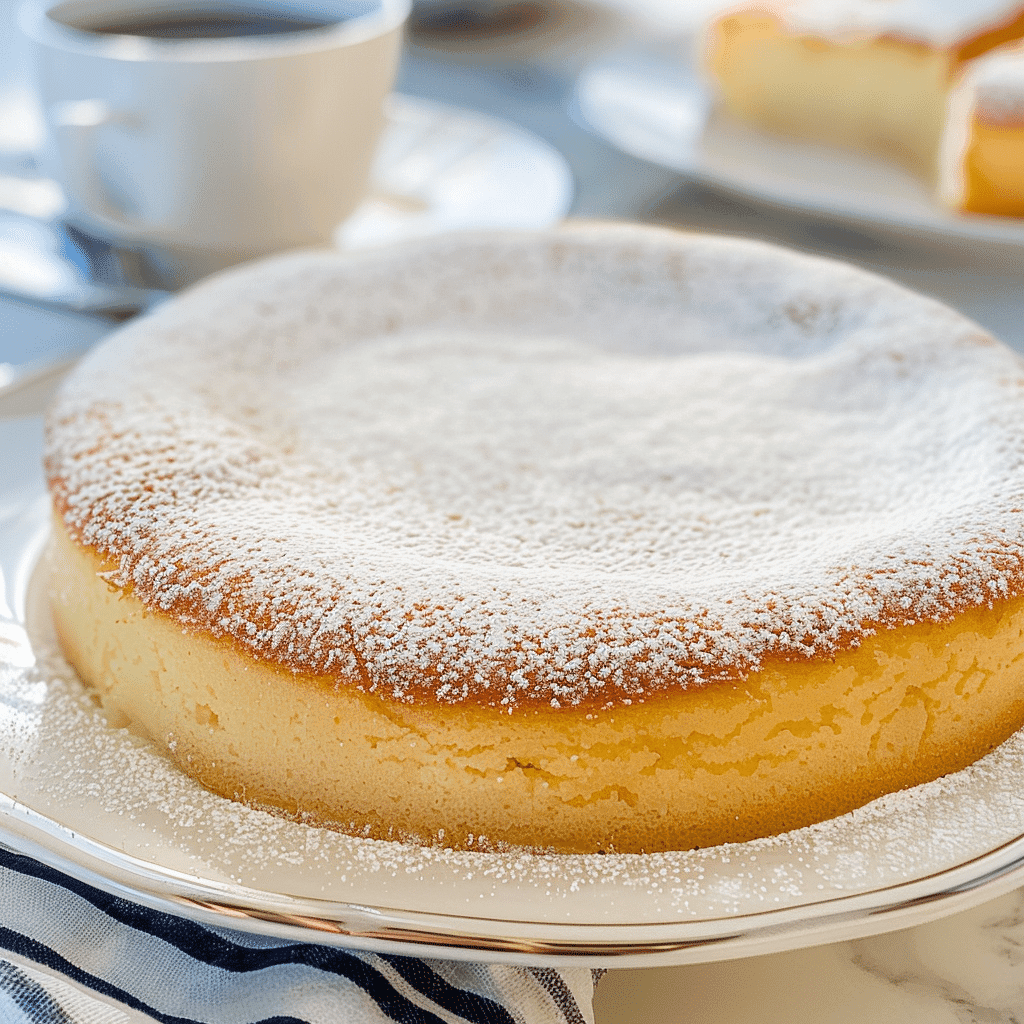
Serving Suggestions and Flavor Pairing Ideas
Japanese Cheesecake Rice Cooker Recipe for Everyday and Special Events
Japanese cheesecake rice cooker recipe is incredibly versatile, fitting effortlessly into both everyday dessert routines and special occasion menus. For a casual treat, serve it chilled alongside a soothing cup of green tea. When entertaining, elevate it by topping with tangy lemon curd or a vibrant berry compote.
The cake’s airy texture and mild sweetness pair beautifully with fruity or floral accompaniments, making it a great choice for brunch or a delicate finale to a spicy main course. If you’re looking for another easy-to-make soft dessert, my carrot mug cake offers simple, comforting flavor with minimal fuss.
Enhancing Your Japanese Cheesecake Rice Cooker Recipe Experience
Elevate your Japanese cheesecake rice cooker recipe with a few simple presentation touches, Like a dusting of powdered sugar, fresh berries, or a drizzle of fruit sauce. Slice the cake neatly and garnish with edible flowers, fresh mint sprigs, or thin curls of citrus zest for an elegant look.
For a more elaborate dessert spread, pair your cake with an assortment of cookies, fresh fruit slices, or mini panna cottas. This rice cooker cake can take center stage on a Japanese-inspired dessert board. Remember, its gentle texture and subtle sweetness make it a wonderfully versatile finish for any meal.
Conclusion: Light, Elegant, and Comforting in Every Slice
Japanese cheesecake rice cooker recipe is more than just a convenient shortcut, It’s a smart, soulful way to enjoy homemade dessert without firing up the oven. This recipe delivers that classic fluffy, melt-in-your-mouth texture you’d expect from a high-end pâtisserie, using simple ingredients and the rice cooker you likely use every day.
What makes this Japanese cheesecake rice cooker recipe truly stand out is its simplicity. There’s no need for a water bath or complicated techniques, Just cream cheese, eggs, sugar, and a careful hand. From whipping the batter to gently folding in soft egg whites, this recipe invites you to slow down and savor each step of the process.
Whether you’re preparing dessert for a cozy family dinner or looking to impress guests at brunch, this Japanese cheesecake rice cooker recipe rises beautifully to the occasion. It’s easy to serve, stores well, and adds elegance to any table. If you enjoy this, you’ll find similar comfort and simplicity in my carrot mug cake or the subtly sweet yuzu shortbread cookies.
Few recipes offer such rewarding results with so little fuss. With this Japanese cheesecake rice cooker recipe, making dessert becomes a relaxing, creative moment to enjoy every single bite.
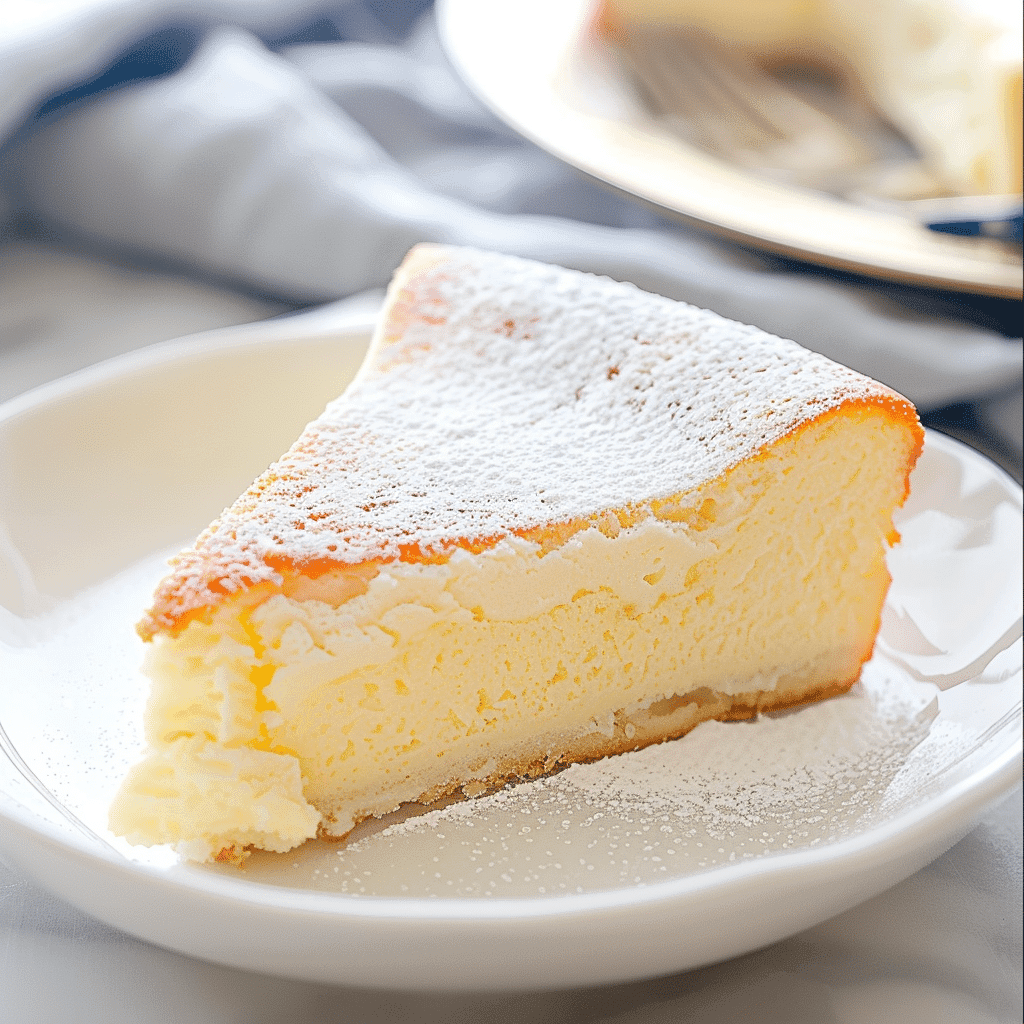
For more recipes, Please follow me on Pinterest.
Frequently Asked Questions About Japanese Cheesecake Rice Cooker Recipe
How to know when Japanese cheesecake is done?
Japanese cheesecake rice cooker recipe is done when the edges start to gently pull away from the sides of the rice cooker, and the surface has a soft, pale golden color. Press the top lightly, If it bounces back softly, it’s ready. If your finger leaves an impression, give it a few more minutes. You can also insert a skewer or toothpick; it should come out mostly clean with just a few moist crumbs.
Why does my Japanese cheesecake crack?
Cracking often happens because of sudden temperature changes or overcooking. Avoid opening the lid while it’s cooking, and let the cake cool gradually once done. Overwhipped or poorly folded egg whites can also cause an uneven structure that leads to cracks. A helpful trick is to place a damp towel over the lid during cooking to regulate steam and moisture.
How long can Japanese cheesecake last?
Once completely cooled and chilled, Japanese cheesecake rice cooker recipe keeps well for up to 3 days in an airtight container in the fridge. You can freeze individual slices wrapped in parchment paper, then store them in a zip-top bag for up to a month. Thaw overnight in the fridge and dust with powdered sugar before serving for best results.
How do you know when a cheesecake is fully cooked?
For this Japanese cheesecake rice cooker recipe, doneness is judged by appearance and touch. It should feel set but still soft, spring back when pressed gently, and have a uniform look without raw spots or wet jiggle. Overcooking makes it dry; undercooking leaves it too soft in the center. Trust visual and tactile cues more than the clock.

